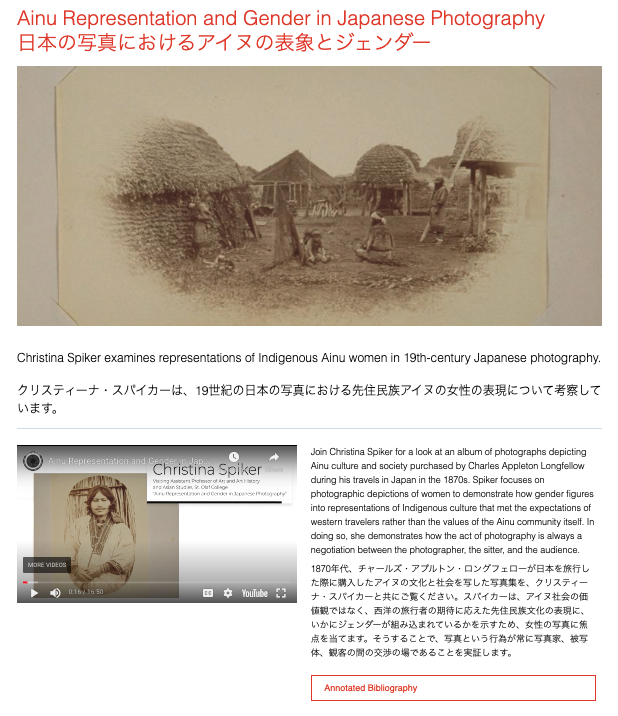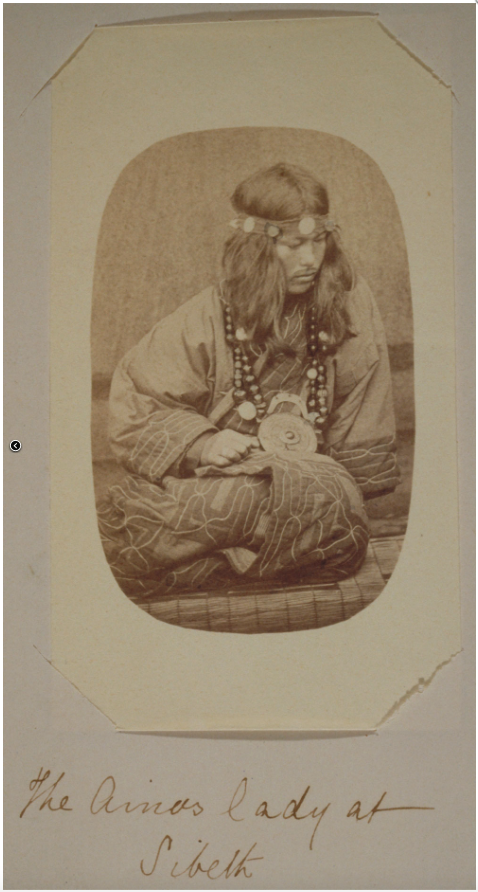

Since the introduction of the first camera to Japan in 1848, women have been integral to the social constructions of photography as a visual technology, art form, and commercial practice. Yet, historians, arts institutions, galleries, and publishers continue to grapple with how to write and present these histories, often ignoring them completely. What is more, primary source materials and scholarly perspectives on the history of Japanese photography remain largely inaccessible due to language barriers, restricted access to physical archives, and limited digital resources.
Dr. Kelly McCormick is a professor of modern Japanese history, whose research focuses on the ways in which photography can be invaluable in revealing relationships, whether to power or to community. In 2022, McCormick collaborated with Carrie Cushman, director and curator of the Hartford Art School, to launch Behind the Camera: Gender, Power, and Politics in the History of Japanese Photography.
The digital humanities website, presented entirely in English and Japanese, features short Open Education Resource (OER) lecture videos created by international experts. These videos are the centrepiece of learning modules, each accompanied by a digitized archive of related photographs, an annotated bibliography, and an interactive timeline that tracks women photographer’s activities in relation to Japanese history and the global history of photography.
“Two of the main goals of Behind the Camera are to make research and primary source materials on the history of Japanese photography accessible to Japanese and English speaking audiences around the globe, and to provide the starting point for new research on the history of Japanese photography from gender studies perspectives,” McCormick says.
Behind the Camera has a distinct focus on intersectional approaches to the history of photography. “The history of photography is often taught as a history of artistic movements,” McCormick explains. “Behind the Camera is part of the movement toward thinking about the social histories of photography that examine photography as a mass practice and a medium that is employed in almost every discipline.”


Dr. Christina Spiker’s module for Behind the Camera, Ainu Representation and Gender in Japanese Photography日本の写真におけるアイヌの表象とジェンダー
Bringing together the history of photography, feminist art history, and the history of modern Japan, Behind the Camera presents scholarly research and primary source materials in a format that opens up access to new perspectives, and to allow students and researchers to use the materials to construct their own work. “By bringing these fields into conversation with one another, we make interdisciplinary perspectives possible [which then creates space for] exciting new questions.”


Portrait of Ainu woman with headband and necklace, Albumen print, Courtesy of National Park Service, Longfellow House-Washington’s Headquarters National Historic Site. Image via Kelly McCormick.
Speaking to the database, McCormick highlights the work of Dr. Christina Spiker, whose re-examination of photographic depictions of Ainu women problematizes the ways in which Japanese and Euro-American photographers mobilized colonial and orientalist ways of seeing. The Ainu are Indigenous people from the northern Japanese island now known as Hokkaido. “By analyzing photographs created for colonial and tourist markets, Dr. Spiker teaches us to pay attention to larger historical phenomena and their representations of Indigenous women.”
“In photography’s 200 year history, the medium has convinced us that we can and should know the world through it. It also raised questions about the ethics of sight and public participation in the events through the creation and consumption of photographic images. Paying attention to who takes photographs in this way gets us closer to understanding the histories of how certain communities have been represented or gone unrepresented in the history of Japan,” McCormick continues.
At its core, Behind the Camera is envisioned as an open-source, collaborative website that provides opportunities for intervention and activism in the representation of women’s multifaceted participation in the world of photography. By decentering any one perspective and adding new modules annually, this website approaches feminist art history as a collective practice.


Interactive Timeline compiled from archives, exhibition catalogues and online resources, which includes selected bibliographies to inspire future work. Designed by Steven Geofrey, Harvard Growth lab. Image via Kelly McCormick.
The interactive timeline of Japanese women photographers is another example of how the labor of collaboration and co-authorship make possible an entirely new way of seeing, researching, and writing history. Working closely with Steven Geofrey, a visionary software developer in data visualization at Harvard’s Growth Lab, Behind the Camera creates a new way to make information related to Japanese women photographers visible and legible across different registers. As viewers select individual photographers on the timeline they can choose to learn about their individual exhibitions and publications but also see their work in relation to major events in Japanese history and the histories of global photography. This timeline will continue to grow as more information and archives are uncovered.
“Behind the Camera is not a project to add women to the existing history of male photographers, or to create an alternate women’s history of photography. It seeks to provide a critique of the ways that women have been left out of histories and present solutions for new ways that their histories could be written. We might begin to write history more expansively and inclusively, not only in Japan, and not only in the history of photography.”


